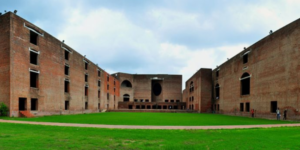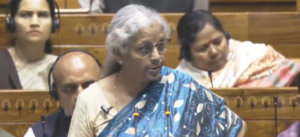❈ ❈ ❈
Is Iran in the Midst of a Feminist Revolution?
Frieda Afary
December 7, 2022: The women-led mass protests in Iran have now lasted for almost three months. Since September 16 — when protests began in Kurdistan and Tehran in response to the state police murder of Zhina Mahsa Amini for wearing an “improper” hijab — the state repression has increased severely. According to the Center for Human Rights in Iran, more than 18,000 protesters have been arrested, over 450 have been killed, and more than 50 of those killed have been minors. At least 16 protesters have been charged as “enemies of God,” the punishment for which is death. According to the Iranian government itself, five have been sentenced to death. Many are awaiting trial. Some protesters have been raped in police custody, which is a practice that has occurred in the Islamic Republic since its inception.
The average age of the protesters is 15, and women and girls continue to be at the forefront. Hundreds of college students who have participated in protests are now being denied the right to continue their education as they await trial for charges of “endangering national security.”
The protests and some strikes have spread to many cities and rural areas around Iran and include all the national and ethnic minorities. The repression has also intensified through the use of live ammunition against protesters, especially in the provinces of Kurdistan and Sistan and Baluchestan, and through sharpshooters who aim at the protesters’ eyes to blind them.
Various recent headlines have highlighted the announcement made at a press conference by Iran’s Attorney General, Mohammad Javad Montazeri, who said that Iran’s morality police will be shut down. However, Ansieh Khaz’ali — Iran’s vice president for women and family affairs, who was appointed by President Ebrahim Raisi — immediately clarified this issue in a talk at Sharif University: “I did not say that we no longer have the morality police. I said we will no longer have something called the morality police. We still have a police force in charge of moral security.” The head of the “Office for the Promotion of Virtue and Prevention of Vice” also emphasized that the government will now focus more on using technology to enforce hijab rules.
The fact that women and girls are at the forefront of the protests, burning their compulsory headscarves or hijabs and chanting the slogan, “Woman, Life, Freedom,” has compelled many Iranian and international feminists to refer to the events in Iran as a feminist revolution.
Others have emphasized that Iran has a long history of feminist struggles, which can be traced back as far as the public unveiling of Baha’i leader and writer Tahirih Qurrat al-‘Ayn in 1848 and the participation of women in the 1906-1911 Constitutional Revolution against British and Russian colonialism, the monarchy and the influence of the clergy.
Here, I would like to single out some elements of the current uprising which could be clearly characterized as feminist. At the same time, I would like to heed the voices of those Iranian feminists inside Iran who argue that we need a deepening of the content and vision of this struggle in order to call it a feminist revolution.
Feminist Dimensions of the Uprising
One of the most significant attempts at changing gender relations during the current uprising has been the nationwide effort of college students to desegregate school cafeterias and classrooms. After four decades of forced separation of women and men at universities, students have been taking over cafeterias and refusing to sit in separate sections. These takeovers have largely been led by women.
This campaign of civil disobedience mirrors the efforts of U.S. civil rights activists in the late 1950s and 1960s to desegregate public places, and has produced a backlash from the state. Just as the 1961 Freedom Riders in Mississippi faced brutal beatings, imprisonment and murder for their efforts, Iranian youth are facing the brutal assaults of an authoritarian religious fundamentalist state, its security police and their bullets for their efforts at gender desegregation.
Another significant expression of feminist consciousness has been the public unveiling by Gohar Eshghi, an older Iranian working-class woman from the traditional sector of the population that strictly observes rules concerning the hijab. Her son, Sattar Beheshti, a worker-blogger, was murdered in prison 10 years ago. Eshghi held a picture of her son, took off her hijab for the first time in public in front of a video camera, said she supported the youth demanding a revolution, and called on others to join them because “we have nothing to lose.” She proclaimed that she refused to follow any religion if it meant killing people. This video had thousands of views and created a great deal of support on social media because so many Iranians were in awe of her courage, her strong defense of women’s rights and her opposition to any forced religious views.
Perhaps the most significant feminist challenge has come from a group of Baluch women named Dasgoharan (sisterhood), who have issued a number of collective statements during the past two months articulating the demands of Baluch women, the most oppressed, most marginalized and most deprived sector of the Iranian population.
The first Dasgoharan statement confronted an army colonel’s rape of a 15-year-old girl during interrogation, and spoke out against the recent state-organized mass shooting of over 100 Baluchis after a protest against this rape. Dasgoharan claimed that in the past, a Baluch woman who was raped would be murdered by her family since she would be considered a source of shame to them. However, now after the nationwide protests set off by the murder of Amini, Baluch women and Baluch society refuse to stay silent about rape.
In a subsequent statement, the Dasgoharan group challenged the chief Sunni cleric of the Baluchis, Molavi Abdul Hamid, who had recently called for a popular referendum to determine Iran’s form of government. They exposed his history of collaboration with the Iranian regime and the Taliban, as well as his sexist practices, including allowing families to deny an education to girls.
Dasgoharan stated that they are “against all forms of domination and repression” and want to express Baluch women’s “own independent voice.” They refuse to separate patriarchy from its social, economic and historical context or limit it to a cultural phenomenon. They see the new uprising in Iran as an opportunity to raise all these demands, including the rights of folks in the LGBTQ community.
It is toward these aims that other Iranian feminists have also been issuing calls for deepening the content of the current uprising. Protesters are continuing to express slogans which oppose both a monarchical and a clerical system of government. Many young women have challenged the tendency to move the uprising in a narrow Iranian nationalist direction, expressed in slogans such as “Man, Country, Rebuilding” (which in Persian rhymes with “Woman, Life, Freedom”).
Farzaneh Raji, an Iranian socialist feminist writer, translator and former political prisoner, has recently written that “we cannot use patriarchal slogans to fight patriarchy.” She has specifically called for slogans that express the “ideals, demands and goals of the movement.”
A statement by a group of Iranian feminists calling for mass protests on the 40-day anniversary of Amini’s death also stated that they oppose any type of dictatorship — whether by the clergy or by the monarchy — and fight simultaneously and “without prioritization for the emancipation of women from patriarchy, for the emancipation of workers, teachers, nurses from class exploitation, for the emancipation of students from educational dictatorship, for the emancipation of oppressed nationalities from this centralized system and for women’s self-determination, for equality, justice, for women, life, freedom.”
Free the Imprisoned Feminists
As protests continue in the streets, some of the most vocal, articulate, experienced and active feminists inside Iran are currently either languishing in prison or out on furlough and in effect prevented from engaging in any activities. These include Narges Mohammadi, a campaigner against the death penalty and solitary confinement; Nasrin Sotoudeh, a human rights attorney; and other writers and activists such as Atena Daemi, Golrokh Iraee, Zeynab Jalalian and Sepideh Qolian, among others. These feminists have also written about the terrible conditions faced by imprisoned women in general. Inside prisons, they have created new bonds of solidarity with marginalized women from oppressed ethnic, national and religious minorities, and have exposed the intertwining of incarceration, state violence, gender violence, economic inequality and patriarchy.
Although the cases of a few of Iran’s feminists such as Nasrin Sotoudeh and Narges Mohammadi have gained some global attention, the demand for the immediate release of Iran’s political prisoners has not become a global campaign. International feminists must urgently publicize the names and biographies of Iran’s imprisoned feminists and speak out against the system of mass incarceration that exists in Iran.
It is impossible to have a feminist revolution in Iran so long as these women are imprisoned and suffer from all the ailments that prison life has imposed on them. We need their knowledge and experience, as well as the networks which they have developed around the country in order to deepen the content of the current uprising.
The active presence of these feminists in the struggle, and the raising of explicit feminist issues such as opposition to honor killings and rape, support for abortion/reproductive rights, the right to divorce and custody of children, the rights of the LGBT community, labor rights, and the rights of oppressed national and religious minorities can help guarantee that the movement to overthrow the Islamic Republic will continue to proceed in a progressive direction and not be diverted by patriarchal nationalism.
(Frieda Afary is an Iranian American public librarian, translator, writer, activist and author of ‘Socialist Feminism: A New Approach’ (Pluto Press, 2022). She is also the producer of ‘Iranian Progressives in Translation’ and socialistfeminism.org. Courtesy: Truthout.)
❈ ❈ ❈
Women’s Movement in Iran Has Already Secured a Major Victory
Zan Irani
October 26, 2022: As a feminist friend from Iran tweeted recently, the women’s movement in Iran has already secured a major victory. Women in Iran will never again be ignored or underestimated. They have undeniably staked their claim to equal rights, inspiring many others to rise despite years of crushing repression and oppression. This is no small feat and an essential condition for any truly revolutionary movement. Through their struggle, they have also sparked a feminist transnational awareness that promises a new solidarity that crosses class, racial and religious boundaries.
Iranians around the world are sharing an unprecedented moment of national pride in solidarity with the uprising for freedom and justice in Iran. Entering its sixth week of sustained confrontation with the security forces of the Islamic Republic, the protests continue unabated while the death toll rises. This spontaneous grassroots uprising was set in motion by the death of Mahsa Amini, a 22-year-old Kurdish woman who died after her arrest by the “morality police” for not observing a government-mandated Islamic dress code. Since late September, the uprising has grown from militant street protests led by young women to widespread national demonstrations.
Large student demonstrations in Tehran and many other cities have been met with arrests and bloody reprisals. University students have a long history of anti-dictatorship, anti-imperialist struggle in Iran going back to the months following the 1953 coup d’etat against the nationalist government of Mohammad Mossadegh. December 7 marks “Student Day” commemorating the killing of three Tehran University students during protests against then-Vice President Richard Nixon’s visit to Iran in that year. Students have remained at the forefront of opposition to the Islamic Republic as witnessed during the militant and widespread 1999 student protests and again in 2009 during the Green movement. The current uprising includes elementary and high school students as well. The violent response by the authorities to their participation has alarmed the international community.
News of worker strikes in different industries including oil and petrochemicals has also brought the uprising to a new level, one that poses a deeper threat to the stability of the government. While reliance on oil has decreased in recent years, it remains a major source of government income. As in the 1979 revolution, the mobilization of workers in the oil industry is seen to be crucial to the success of the current uprising, both because of the economic impact it will have, and the influence it will have on workers in other sectors to strike as well.
Why are people risking their lives on the streets of Tehran and dozens of other cities across the country despite a relentless crackdown by Iran’s brutal security forces (police, plainclothes “Basiji” paramilitary, the army, and the powerful “Sepah” or Revolutionary Guards)? “Woman, Life, Freedom” (Jin, Jiyan, Azadi), a slogan that originated in the Kurdish national movement and has been the movement’s rallying cry from day one, was first raised in protests in Saqqez, in Iranian Kurdistan (Mahsa Amini’s hometown). It is attributed to Abdullah Ocalan, one of the leaders of the PKK (Kurdistan Workers’ Party), who placed women at the center of the Kurdish liberation movement. During the recent uprising, it has united women and men, old and young, across class, religious and geographic boundaries around three major shared hardships: increasing violence against women, deteriorating living conditions, and an oppressive lack of personal and civil freedoms. Other chants like “Death to the Dictator” and “Down with the Islamic Republic” focus on the Supreme Leader Ali Khamenei and the regime itself, and clearly signify a call for a political revolution, reminiscent of the sentiment toward the shah in 1979.
The Iranian protest song “Baraye” (“For”) by Shervin Hajipour captures the country’s nascent revolutionary movement in its fullness. Hajipour, who was arrested soon after his song became the anthem for the movement (he has since been released), collected the hopes and sorrows of Iranians expressed on hundreds of different social media posts. From these he composed and set to music a simple but emotional inventory of the many motivations behind the freedom movement in Iran. It is not surprising that a campaign on TikTok urging users to submit the song for one of the Grammys’ new special merit awards resulted in the song receiving over 83 percent of the 115,000 nominations.
The song Baraye suggests the breadth and depth of the movement as well as common concerns shared by many people inside and outside of Iran: for women’s rights, personal freedoms of choice and expression, the shame of poverty and social injustice, the destruction of the environment, endangered species, animal rights, students’ rights, children’s rights, corruption, political prisoners, gender rights, and for a peaceful, ordinary life free from anxiety and sleeplessness!
Like so many Iranian emigres, I do not wander far from my cellphone these days, making sure to be available if friends or family from Iran should call. And I am incessantly summoned by notices to check my email and other messaging and social media accounts. There are times when it is overwhelming, and I want to stop, try to go back to normal life, but then the urgency of it all hits. After nearly 44 years of living under one of the most repressive regimes in history, the people of Iran have once again risen in anger, against all odds, this time led by young women and men who are armed with the barest means of self-defense but filled with unbound courage and hope. And all they ask of us is to keep their voice alive, to garner support from the world community, to hold the Islamic Republic regime accountable for its past and current abuses of human and civil rights.
Time is of the essence and questions keep me up at night. Will there be greater bloodshed tomorrow? Will the government succeed in cutting off the country completely? Will foreign powers, overtly or covertly, intervene and try to install a friendly alternative rather than respecting the aspirations of those struggling on the ground? How long can this popular-grown movement survive without a cohesive leadership?
The hope is that the movement will be able to quickly mature — organize, educate, mobilize — before the government or outside forces can defeat it. There is no single individual or party that is leading the movement today. Instead, we are learning through social media of new student-, worker- and neighborhood-based “coordinating” committees and councils. Hoping to prevent any potential leadership from emerging, scores of activists, many of who come from existing grassroots organizations, were “preventatively” detained in early October, joining other labor leaders, women’s rights activists and others already in prison before the uprisings.
Despite the very real possibility that it may have to retreat due to increased repression by the government’s security forces, as others have in the past (most recently in 2019), this movement, led by women, is more inclusive than those that came before it. Most importantly, different nationalities (from Kurdish, Turkish, Arab and Baluchi areas) have joined the movement in solidarity. We can also take heart in the incredible resourcefulness of the movement, the creativity of young people who use social media and the internet as important organizing tools, and the growing participation of workers and professionals.
Time is of the essence. Raise your voice, “baraye” women and the freedom movement in Iran.
(Zan Irani is the pseudonym for an Iranian American woman with family and friends in Iran who is currently living in the U.S. but continues to visit the country. Courtesy: Truthout, a US nonprofit news organization dedicated to providing independent reporting and commentary on a diverse range of social justice issues.)




